Off Season Trek in Nepal
Nepal, renowned as a trekking paradise, is a year-round destination for trekking, hiking, and adventure enthusiasts. The country experiences six peak months for tourism, with June to August and December to February standing out as the most favored seasons for trekking and climbing in the Himalayas. During these times, adventurers flock to Nepal to explore its majestic Himalayan landscapes, making it the prime time for such activities. However, the allure of Nepal extends beyond these high-traffic periods, offering unique opportunities for off-season exploration. The monsoon and winter seasons, often overlooked, present their own set of challenges and rewards for those willing to venture into Nepal’s diverse terrains.

Exploring Nepal in the off-season is an unparalleled adventure, allowing travelers to experience the country's natural beauty without the crowds. The summer/monsoon season unveils a world of lush greenery, refreshing rains, and stunning panoramas, whereas the winter season showcases the Himalayas adorned with snow-capped peaks and valleys blanketed in snow. These periods might require more preparation and careful selection of trekking routes, but they reveal some of Nepal’s most spectacular treks that remain largely unaffected by seasonal changes. Luxury Holidays Nepal invites you to discover some of the most challenging and picturesque treks Nepal has to offer during these off-season months, ensuring an unforgettable journey through the unseen splendors of nature.
Monsoon trek in Nepal
While the monsoon season might deter some from embarking on high-altitude treks in the Himalayas, it opens up unique opportunities to explore regions that flourish during this rainy period. The Himalayas host rain shadow walking trails, dry areas shielded by mountain ranges that block the monsoon rains, offering an alternative trekking experience. Monsoon Trekking in Nepal transforms into a vibrant adventure during these months, with valleys adorned in a tapestry of blooming flowers, lush green landscapes, and fields animated by the daily lives of local inhabitants. This season reveals a side of the Himalayas that is distinctively different from any other time of the year, providing trekkers with a unique blend of natural beauty and cultural richness.
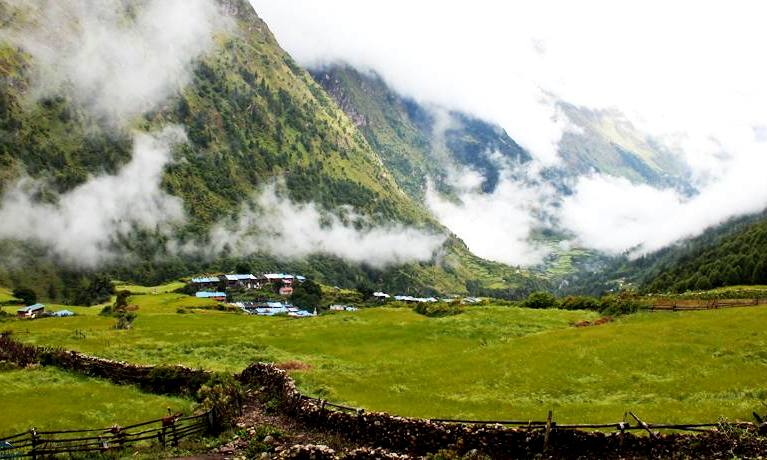
Traveling in Nepal during the rainy season is indeed a journey filled with rich experiences and unexpected delights. Despite fall being the peak tourism season, the monsoon period has its own set of treks that shine under the veil of rain, offering trekkers serene beauty and a quieter path. The thought of Monsoon Trekking in Nepal might conjure up images of relentless rain, yet the reality is a picturesque landscape that comes alive with the season's showers. The high mountain regions of Nepal, in particular, showcase their true splendor during the monsoon, presenting trekkers with lush vistas and a refreshing perspective on the majestic Himalayas, best enjoyed amidst the monsoon's embrace.
Here are the list of places to visit during the monsoon season:
Upper Mustang
Upper Mustang is a rare gem that shines brightest during the off-season, offering an unparalleled trekking experience that transcends the usual boundaries of adventure and exploration. With Luxury Holidays Nepal Pvt. Ltd., embark on a journey to this ancient kingdom, where the traditions of the past blend seamlessly with the breathtaking landscapes of the present.
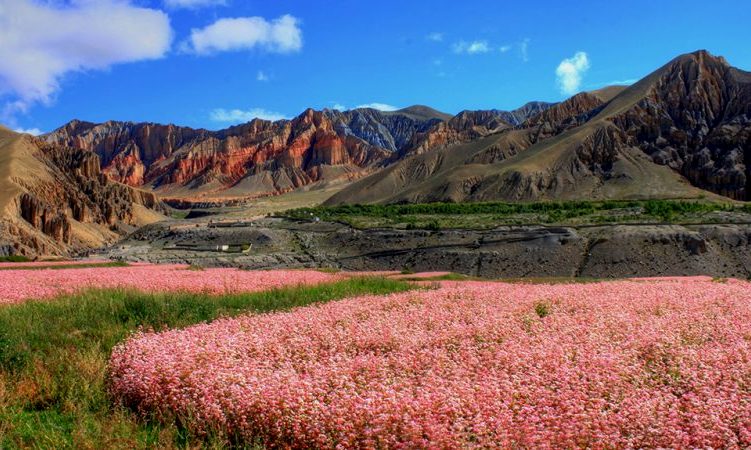
Unveiling the Mystique of Upper Mustang
- Upper Mustang, often referred to as the Last Forbidden Kingdom, remains one of the few places on earth where Tibetan culture remains virtually untouched by modernity. Trekking in Upper Mustang during the off-season allows adventurers to witness the stark beauty and solitude of the landscape, with fewer travelers and more authentic interactions with local communities.
Highlights of the Upper Mustang Trek
- Unique Landscape: The semi-arid desert with deep ravines and rock shelves, set against a backdrop of snow-capped peaks, presents a landscape so surreal it feels like stepping onto another planet.
- Rich Cultural Heritage: The trek offers a deep dive into the ancient Tibetan Buddhist culture, with monasteries that date back centuries, colorful prayer flags, and chortens that dot the landscape.
- The Walled City of Lo Manthang: The capital of Upper Mustang, Lo Manthang, is a highlight, with its alleyways, monasteries, and royal palace, offering a glimpse into a way of life preserved for centuries.
- Festivals and Traditions: Traveling during the off-season might coincide with unique cultural festivals such as Tiji, offering insight into the spiritual and communal life of the Mustang people.
- Rain Shadow Effect: Even during the monsoon months of June to August, Upper Mustang remains largely dry, making it an ideal destination for monsoon trekking in Nepal.
Trekking to Upper Mustang with Luxury Holidays Nepal during the off-season is not just a journey through the stunning landscapes but an adventure into the heart of Himalayan culture. It's an opportunity to tread lightly on sacred grounds, where every step tells a story of faith, resilience, and the enduring beauty of nature.
Nar Phu Valley Trek
Nar Phu Valley, a secret Himalayan sanctuary, offers an off-the-beaten-path trekking experience that combines remote landscapes, ancient villages, unique Tibetan cultures, and breathtaking high mountain passes. With Luxury Holidays Nepal Pvt. Ltd., adventurers can explore this secluded region during the off-season, a time when the trails are quieter, the skies are clearer, and the cultural experiences are more profound.
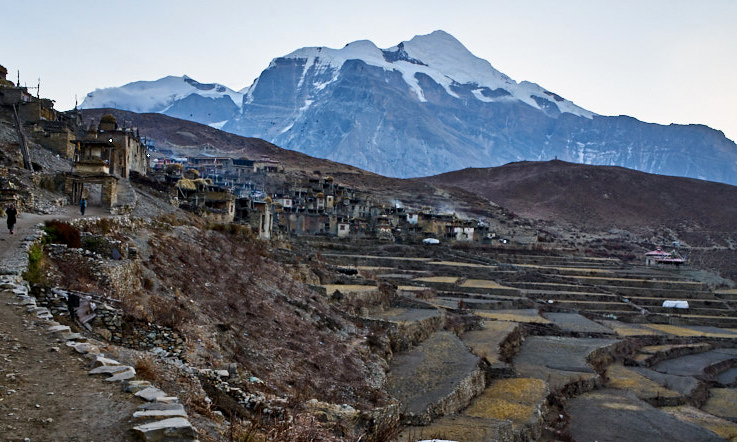
Discovering the Magic of Nar Phu Valley
- Located in the Annapurna region, the Nar Phu Valley is a treasure trove of ancient Tibetan heritage, stunning alpine scenery, and majestic mountain vistas. Trekking in the off-season, particularly during the months outside the traditional high trekking season, provides an exclusive glimpse into the lives of the local Nar and Phu communities, whose traditions and customs have remained largely untouched by the outside world.
Highlights of the Nar Phu Valley Trek
- Remote Villages: Nar and Phu villages are the heart and soul of this trek, offering a window into a way of life that has been preserved for centuries.
- Spectacular Landscapes: The trek navigates through narrow canyons, lush forests, and majestic rivers, culminating in spectacular views of the Annapurna, Manaslu, and Dhaulagiri ranges.
- High Mountain Passes: Crossing the challenging Kang La pass offers an exhilarating experience with panoramic views of the surrounding Himalayas.
- Buddhist Monasteries: Ancient monasteries and religious sites along the way provide insight into the spiritual practices that are integral to the communities of Nar and Phu.
- Wildlife and Biodiversity: The valley's diverse ecosystems are home to an array of flora and fauna, offering opportunities for unique wildlife sightings.
The Nar Phu Valley Trek with Luxury Holidays Nepal is more than just a trek; it's an expedition into the heart of the Himalayas, where adventure meets heritage, and landscapes tell the tales of time. The off-season presents a unique opportunity to explore this hidden valley in solitude, making your journey a truly personal and profound experience.
Phoksundo Lake Trek
Embark on a journey to Phoksundo Lake with Luxury Holidays Nepal Pvt. Ltd., where the pristine beauty of Dolpo's crown jewel awaits adventurers seeking solitude and unspoiled nature. The Phoksundo Lake Trek is a sublime off-season expedition that showcases the tranquil magnificence of one of Nepal's most stunning natural wonders, set against the backdrop of the remote and mystical Dolpo region.
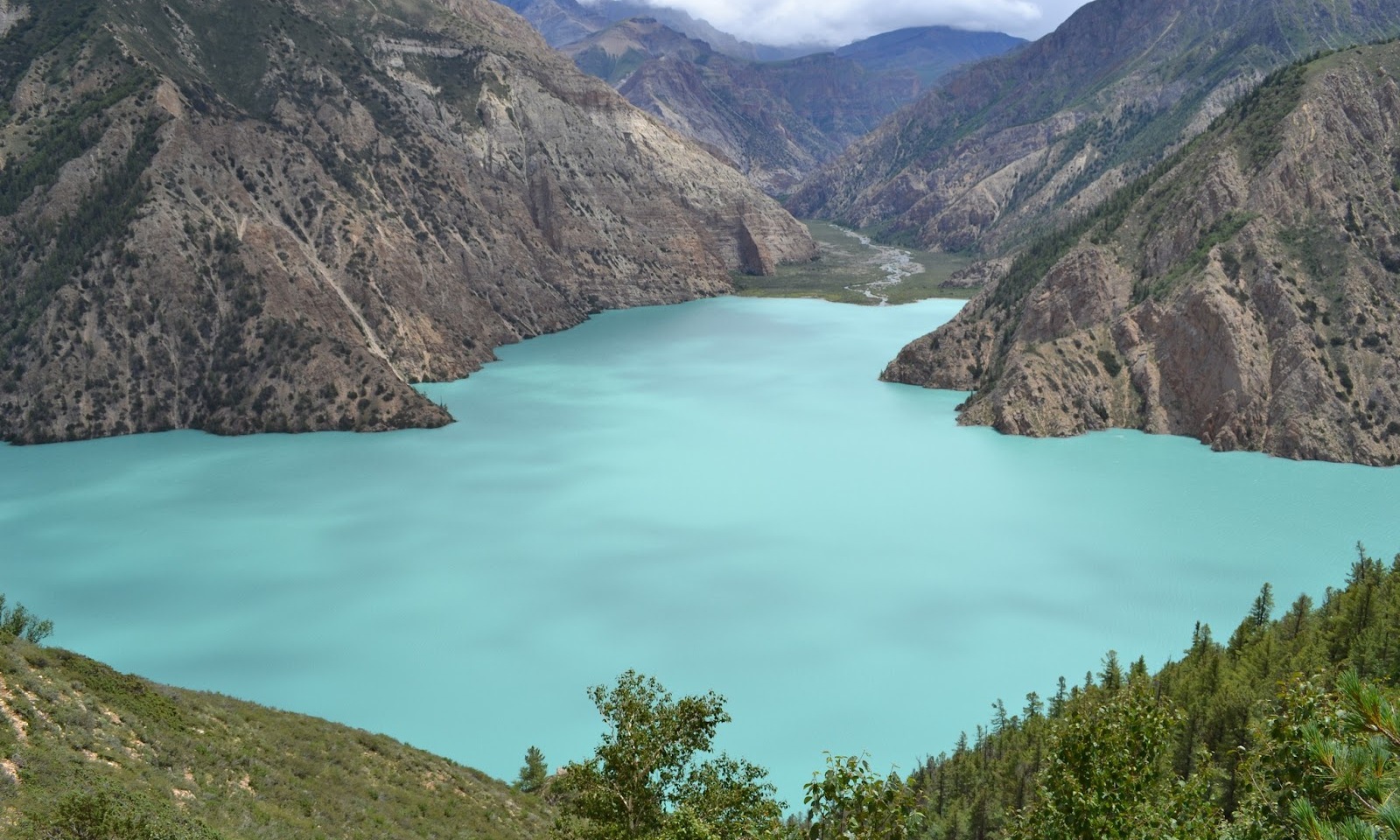
Exploring the Ethereal Beauty of Phoksundo Lake
- Phoksundo Lake, renowned for its mesmerizing turquoise waters, is nestled in the heart of the Shey Phoksundo National Park, the largest national park in Nepal. This trek not only offers the chance to witness the lake's breathtaking beauty but also to explore the rich cultural tapestry and biodiverse landscapes of the Dolpo region, far removed from the hustle and bustle of popular trekking routes.
Highlights of the Phoksundo Lake Trek
- Spectacular Natural Scenery: The trek to Phoksundo Lake unfolds through a variety of landscapes, from lush forests and traditional Tibetan villages to stark, rugged canyons reminiscent of the Tibetan plateau.
- Shey Phoksundo National Park: Home to a diverse range of flora and fauna, the national park offers trekkers the opportunity to experience Nepal's wildlife up close, including the possibility of spotting rare species such as the snow leopard.
- Cultural Immersion: The Dolpo region is steeped in Tibetan Buddhist culture, with ancient monasteries, chortens, and the unique lifestyle of the Dolpa people providing a deep cultural immersion experience.
- Ringmo Village: A traditional Tibetan village near Phoksundo Lake, Ringmo is an excellent example of Dolpo's cultural heritage, with its picturesque setting and traditional stone houses.
- Dolpo's Remote Trails: Trekking in the off-season means even fewer encounters with other travelers, allowing for a truly serene and introspective journey through one of Nepal's most secluded areas.
The Phoksundo Lake Trek with Luxury Holidays Nepal is more than a mere hiking trip; it's an invitation to explore the serene and untouched beauty of Dolpo, to immerse oneself in the tranquility of Phoksundo Lake, and to experience the warmth and richness of remote Himalayan cultures. Join us on this off-season adventure for an experience that will linger in your memory long after you've left the shores of Phoksundo Lake.
Tsum Valley and Manaslu Circuit Trek
Tsum Valley and Manaslu Circuit Trek represent an extraordinary journey through one of Nepal's most untouched and spiritually rich regions. Undertaken during the off-season, this trek offered by Luxury Holidays Nepal Pvt. Ltd. promises an unparalleled experience of solitude, natural beauty, and cultural immersion in the heart of the Himalayas. The trek navigates through the captivating Manaslu Circuit before diverging into the serene and mystical Tsum Valley, a hidden Buddhist sanctuary.
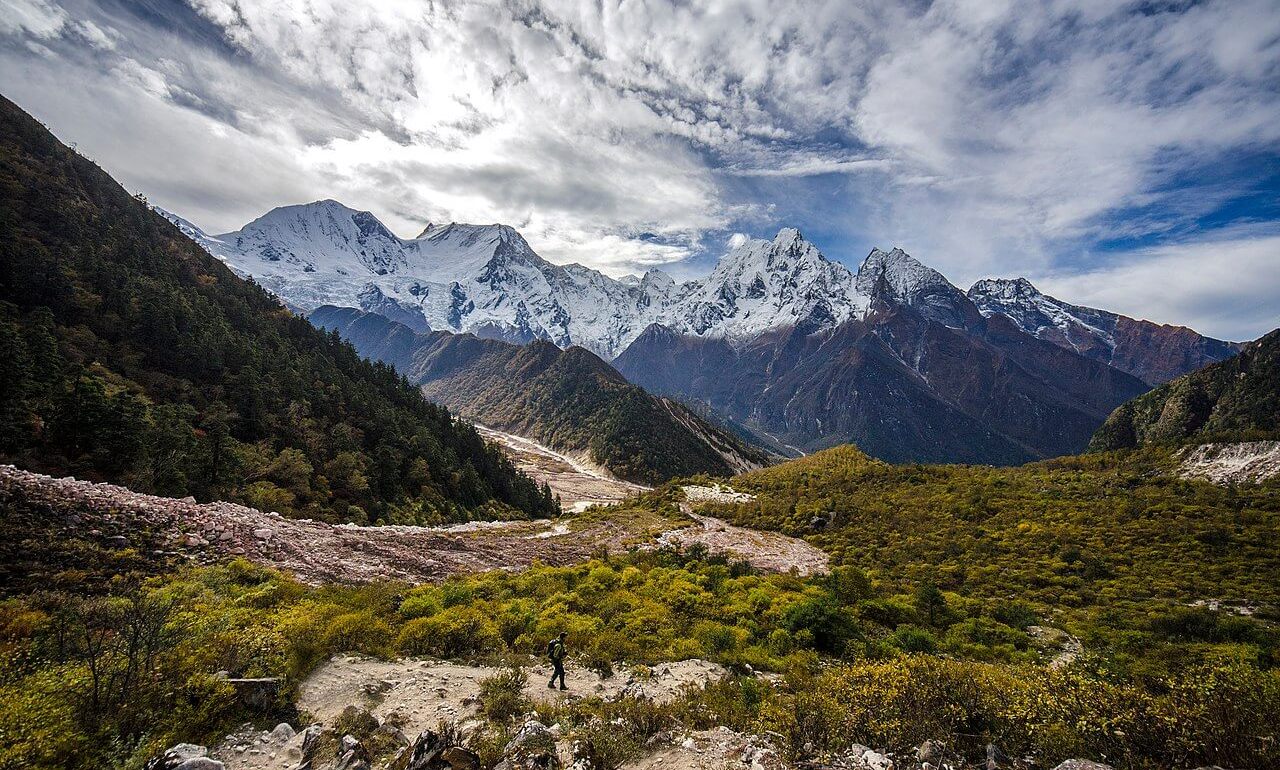
Embracing the Serenity of Tsum Valley and Manaslu Circuit
- The Manaslu Circuit, winding around the world's eighth-highest mountain, offers dramatic landscapes, challenging passes, and a glimpse into the lives of the Nepalese mountain communities. The addition of Tsum Valley to this trek enriches the journey with its profound spiritual heritage, secluded villages, and stunning vistas that remain vivid during the off-season months.
Highlights of the Tsum Valley and Manaslu Circuit Trek
- Diverse Landscapes: From lush forests and alpine meadows to stark, high-altitude deserts, the trek showcases the diverse ecosystems of the Himalayas.
- Cultural Richness: The region is dotted with ancient monasteries, chortens, and mani walls, particularly in Tsum Valley, known for its strong Tibetan Buddhist influence.
- Larkya La Pass: Crossing this challenging pass at 5,160 meters offers breathtaking views of the Himalayas, including Manaslu, Himlung Himal, and Annapurna II.
- Remote Villages: Trekking through remote villages such as Chhekampar and Nile in Tsum Valley provides insights into the traditional lifestyles and customs of the local people.
- Wildlife: The region is a habitat for diverse wildlife, including the elusive snow leopard, Himalayan Tahr, and blue sheep, especially visible during the quieter off-season months.
The Tsum Valley and Manaslu Circuit Trek with Luxury Holidays Nepal invites adventurers to step off the beaten path and explore the depths of Nepal's hidden valleys. This off-season trek not only challenges the body but also enriches the soul, offering a rare blend of adventure, serenity, and cultural immersion. Join us on this journey to discover the untouched beauty of Tsum Valley and the majestic circuit around Manaslu, where every step is a step towards self-discovery and a deeper understanding of the Himalayan spirit.
Lower Dolpo Trek
The Lower Dolpo Trek, offered by Luxury Holidays Nepal Pvt. Ltd., is a captivating journey into one of Nepal's most remote and untouched regions. This off-season trek unveils the hidden treasures of the Lower Dolpo area, known for its rugged landscapes, ancient Buddhist monasteries, and the mystical Phoksundo Lake. Trekking in the off-season allows adventurers to experience the raw beauty and solitude of Dolpo, making for an unforgettable journey through this less-traveled path of the Himalayas.
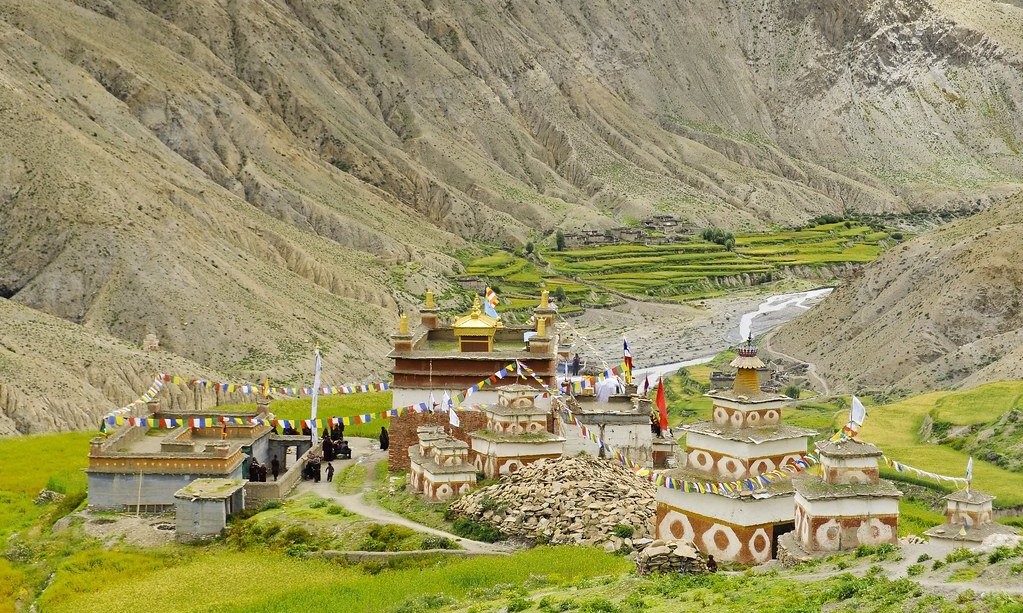
Exploring the Mystical Lower Dolpo
- Situated in the western part of Nepal, Lower Dolpo is a region steeped in Tibetan culture, breathtaking natural beauty, and rich biodiversity. The trek passes through Shey Phoksundo National Park, home to the stunning Phoksundo Lake, and ventures into remote villages where time seems to stand still, and ancient traditions remain a way of life.
Highlights of the Lower Dolpo Trek
- Shey Phoksundo Lake: The jewel of Dolpo, this deep blue lake is renowned for its crystal-clear waters and the serene beauty of its surroundings.
- Bon Monasteries: Lower Dolpo is a stronghold of the Bon religion, a pre-Buddhist faith, and trekkers can explore ancient monasteries that are central to the region's spiritual life.
- Tarap Valley: A beautiful valley with a vibrant culture, rich history, and picturesque villages, Tarap offers a glimpse into the traditional lifestyle of the Dolpo people.
- Rugged Passes: The trek includes crossing challenging passes such as Numa La and Baga La, providing exhilarating experiences and breathtaking views of the Dhaulagiri range.
- Unique Wildlife: The region's diverse habitats are home to rare species such as the snow leopard, Himalayan blue sheep, and the musk deer, offering opportunities for wildlife sightings.
The Lower Dolpo Trek with Luxury Holidays Nepal is an invitation to explore the hidden corners of the Himalayas, where ancient traditions, natural wonders, and the spirit of adventure come together in harmony. This off-season trek offers a rare opportunity to witness the untouched beauty of Dolpo, immerse in its rich cultural heritage, and challenge oneself amidst the rugged terrain of the Himalayas. Join us for an unforgettable journey into the heart of Lower Dolpo, where each step leads to new discoveries and lasting memories.
Winter trek in Nepal
Winter in Nepal, spanning from December to February, with January as the coldest month, transforms the country into a serene trekking paradise. During this season, the temperature drops to its lowest, yet the daytime warmth under the sun creates ideal conditions for trekking. Nepal, renowned for its extensive trekking trails, becomes a winter wonderland in December, offering a unique trekking experience that combines perfect weather, breathtaking views, and tranquil trails. This period is particularly appealing for trekkers of all skill levels, from novices to the more adventurous, as the clearer skies and minimal crowds provide an intimate encounter with nature. Treks below 4000 meters are generally safer and more comfortable due to significant snowfall at higher altitudes, making winter an opportune time for those seeking to marvel at the Himalayas' snow-clad peaks in their full glory.
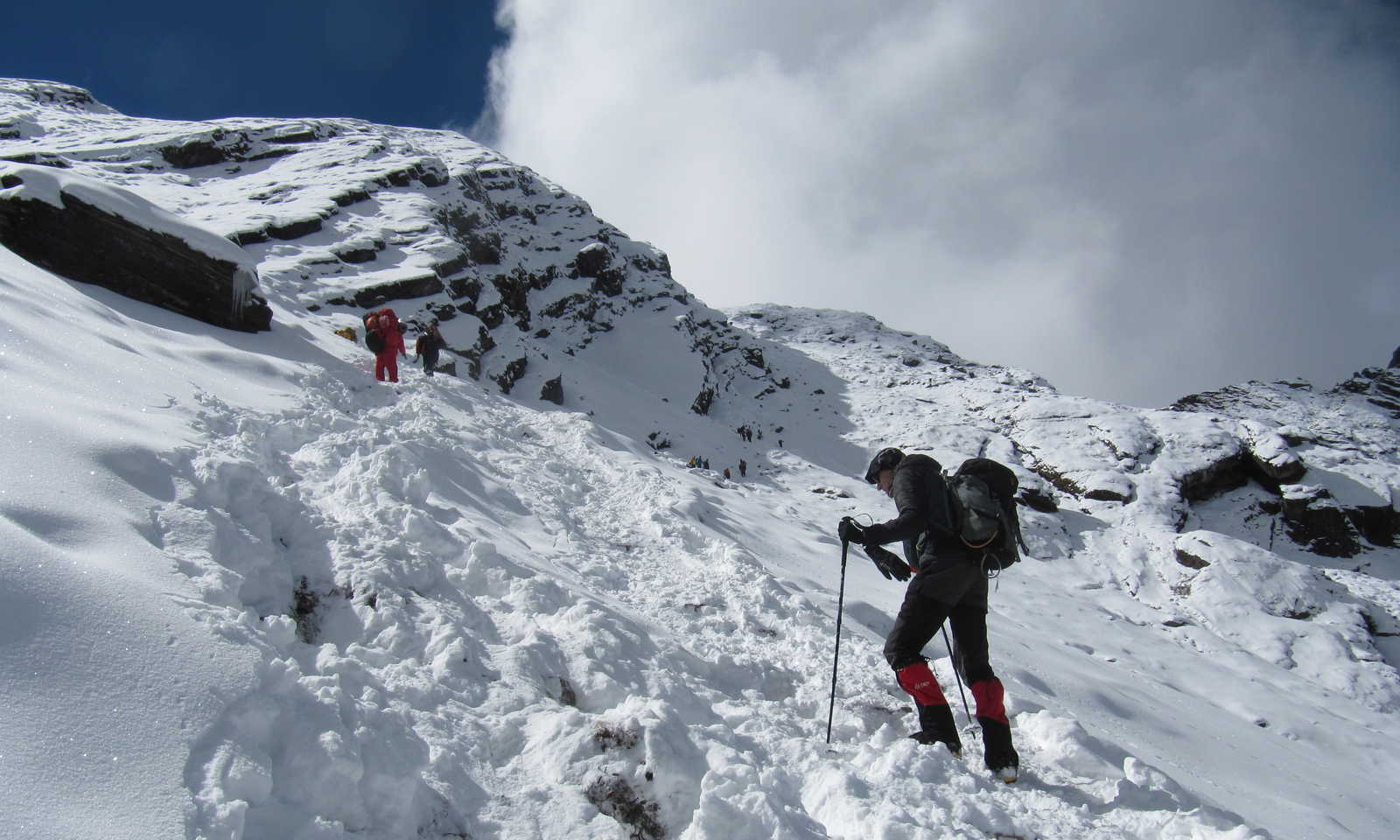
Equipped with the right gear and careful planning, trekkers can navigate Nepal's trails for an unforgettable winter journey. The season is marked by rare rainfall and low humidity, ensuring clear skies for spectacular winter vistas. Among the popular Winter Treks in Nepal, there are several routes that stand out for their accessibility, safety, and the mesmerizing views they offer, catering to a wide range of preferences and experiences. Winter trekking in Nepal not only promises the chance to witness the mountains' majestic beauty adorned with snow but also offers a quieter, more personal trekking experience, away from the usual crowds. This unique combination of factors makes winter an ideal time for trekking enthusiasts to explore Nepal's diverse landscapes and cultural richness.
Ghorepani Poon Hill
The Ghorepani Poon Hill Trek is a jewel in the crown of Nepalese trekking adventures, particularly enchanting during the off-season winter months. Luxury Holidays Nepal Pvt. Ltd. takes pride in offering this trek, which is renowned for its breathtaking sunrise views over the Himalayas from Poon Hill and its accessible trails that meander through picturesque villages and rhododendron forests. The winter season adds a magical layer of snow to the landscape, creating a serene and pristine environment for trekkers seeking a tranquil experience away from the crowds.
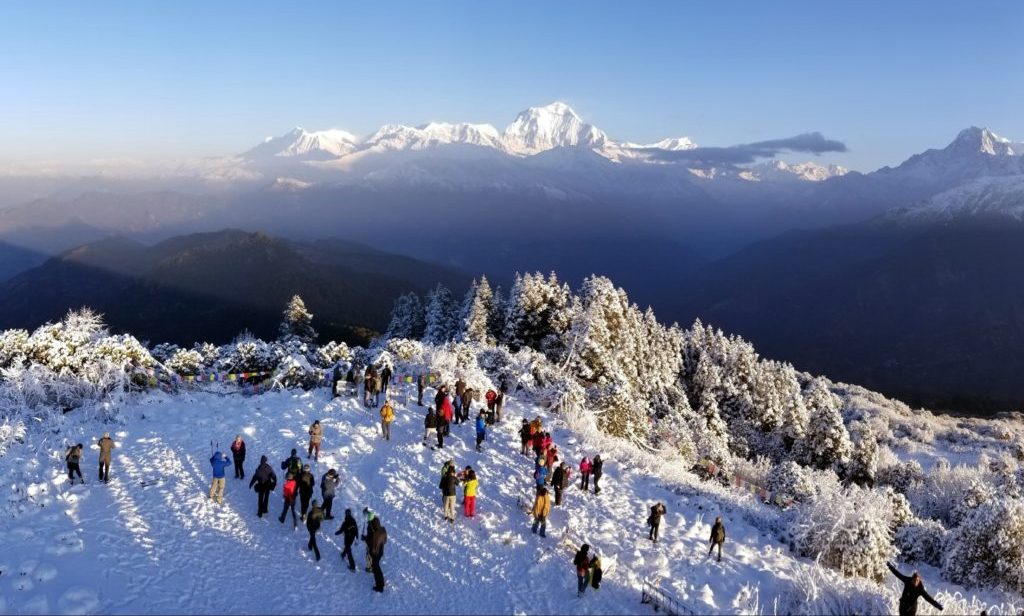
Langtang Valley Trek
The Langtang Valley Trek is a splendid journey into the heart of the Himalayas, offering a unique blend of natural beauty and cultural richness. Luxury Holidays Nepal Pvt. Ltd. invites adventurers to explore the serene landscapes of Langtang during the off-season, a time when the trails are less crowded, and the valley reveals its quiet winter charm. This trek is an excellent option for those seeking a relatively short yet profoundly rewarding Himalayan experience, especially during the winter treks in Nepal and the transitional periods before and after the monsoon.
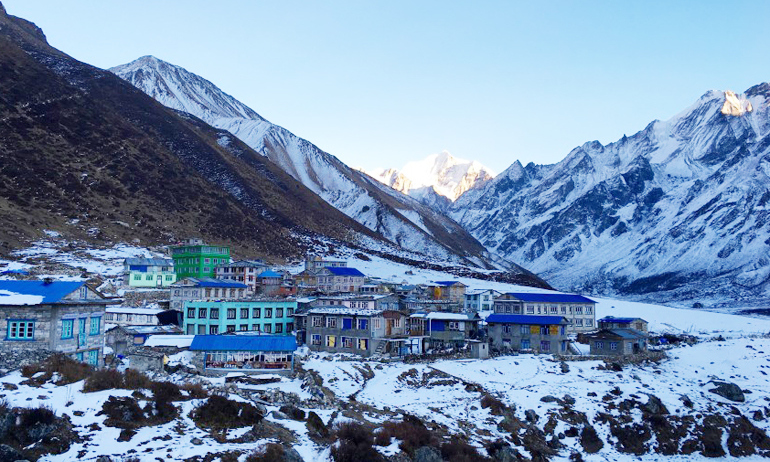
Langtang Valley: A Winter Wonderland
- Trekking in Langtang Valley during the off-season presents a unique opportunity to witness the tranquil beauty of this region under a fresh blanket of snow. The valley, which borders Tibet, offers trekkers a glimpse into the harmonious blend of Tibetan and Nepalese cultures amidst a backdrop of towering peaks and lush forests.
Highlights of the Langtang Valley Trek
- Langtang National Park: Home to diverse wildlife, including the endangered red panda and Himalayan tahr, the park offers a chance to trek through pristine forests and alpine meadows.
- Kyanjin Gompa: A significant spiritual site in the valley, this Buddhist monastery is a peaceful place for contemplation and offers stunning views of Langtang Lirung.
- Tamang Heritage: The trek passes through several Tamang villages, where trekkers can experience the warmth and hospitality of the local people and learn about their rich cultural traditions.
- Spectacular Views: From various points along the trail, trekkers are treated to breathtaking views of Langtang Ri, Langtang Himal, and other surrounding peaks.
- Accessible Adventure: The Langtang Valley Trek is less strenuous than some other Himalayan treks, making it a suitable option for a wide range of fitness levels, especially during the off-season.
The Langtang Valley Trek with Luxury Holidays Nepal is more than just a trek; it's an exploration of the soul of the Himalayas. During the off-season, Langtang transforms into a quiet haven for trekkers seeking solitude and unspoiled natural beauty. Join us on this journey to discover the serene landscapes, vibrant cultures, and breathtaking vistas that make the Langtang Valley a must-visit destination for off-season trekking in Nepal.
Pikey Peak Trek
The Pikey Peak Trek is an off-the-beaten-path adventure that takes you to one of Nepal's best-kept secrets, offering stunning panoramic views of the Himalayan range. Luxury Holidays Nepal Pvt. Ltd. is excited to guide trekkers through this less-traveled path, especially during the off-season, when the beauty of the region can be experienced in its most tranquil and pristine form. This trek is an ideal choice for those who wish to immerse themselves in the breathtaking landscapes and rich cultural heritage of the Solukhumbu area without the crowds.
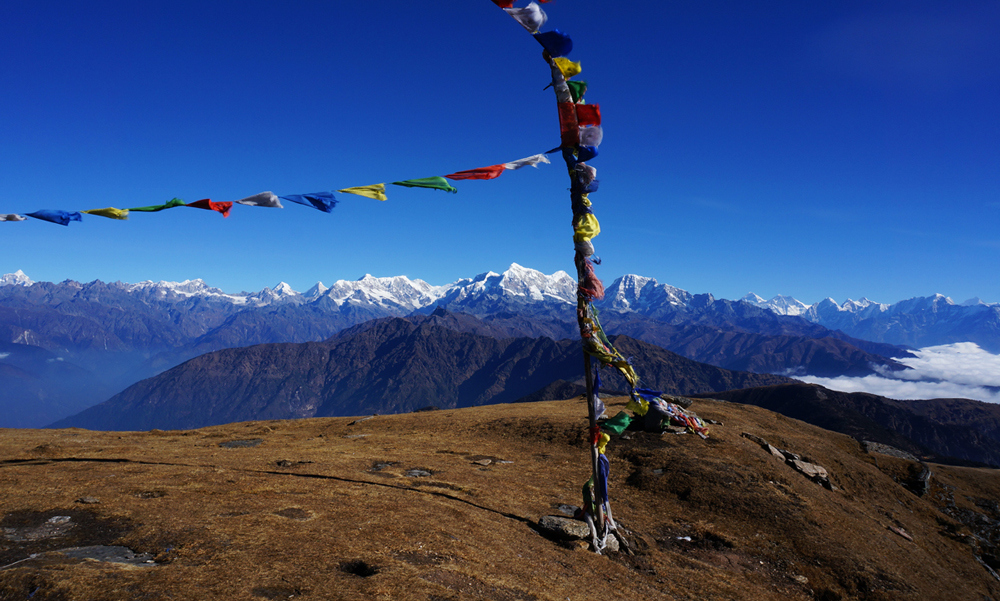
Pikey Peak: A Serene Off-Season Adventure
- Embarking on the Pikey Peak Trek during the off-season allows adventurers to enjoy the serene beauty of the Everest region in solitude. The trek is particularly famous for its sunrise and sunset views over the majestic Himalayas, including Mount Everest, and offers a unique opportunity to explore the rich biodiversity and vibrant Sherpa culture of the region.
Highlights of the Pikey Peak Trek
- Panoramic Mountain Views: Pikey Peak is renowned for its spectacular views of the Himalayan range, including Mount Everest, Lhotse, Makalu, and Annapurna, among others.
- Rich Sherpa Culture: The trek provides a deep dive into the life of the Sherpa people, with visits to ancient monasteries, stupas, and traditional Sherpa villages.
- Diverse Flora and Fauna: The trail passes through dense forests of rhododendron, magnolia, and pine, offering the chance to witness the region's rich biodiversity.
- Lower Altitude Trek: At an elevation of 4,065 meters, Pikey Peak offers a relatively easy trekking experience, making it accessible for most fitness levels and ideal for off-season exploration.
- Solitude and Peace: Trekking in the off-season means fewer tourists on the trail, allowing for a more intimate connection with nature and the local communities.
The Pikey Peak Trek with Luxury Holidays Nepal is more than just a journey to a destination; it's an exploration of the soul of the Himalayas, offering peace, solitude, and breathtaking natural beauty. This off-season adventure is perfect for those seeking to escape the crowds and experience the untouched splendor of Nepal's mountain landscapes. Join us on this remarkable journey to discover the hidden treasures of Pikey Peak and create memories that will last a lifetime.
Khopra Danda Ridge Trek
The Khopra Danda Ridge Trek is a hidden gem among Nepal's vast array of trekking destinations, offering a serene and intimate experience of the Himalayas. Luxury Holidays Nepal Pvt. Ltd. is proud to introduce adventurers to this lesser-known trail, especially during the off-season, when the beauty of the region is at its most undisturbed and majestic. Ideal for those seeking solitude and an authentic connection with nature, the Khopra Danda Ridge Trek presents a unique opportunity to explore the unspoiled wilderness and rich cultural tapestry of the Annapurna region without the usual crowds.
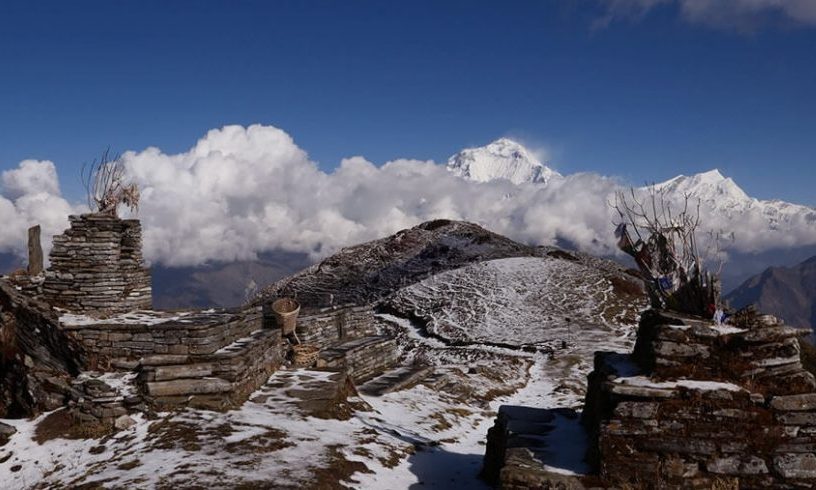
Khopra Danda Ridge: An Off-Season Sanctuary
- Choosing the Khopra Danda Ridge Trek during the off-season allows trekkers to immerse themselves in the tranquil beauty of the Annapurna region. This period offers a different perspective of the mountains, with clearer skies after the monsoon and a peaceful ambiance before the onset of the peak trekking seasons. The trek navigates through lush forests, and traditional Gurung and Magar villages, and offers unparalleled views of the Annapurna and Dhaulagiri ranges.
Highlights of the Khopra Danda Ridge Trek
- Spectacular Mountain Views: From the ridge, trekkers are rewarded with breathtaking views of the Annapurna South, Dhaulagiri, Nilgiri, and many other peaks.
- Community-Based Lodges: The trek supports local community lodges, providing a unique opportunity to experience authentic Nepalese hospitality and culture.
- Rich Biodiversity: The trail winds through rhododendron forests, alpine meadows, and pastures, showcasing the diverse flora and fauna of the Annapurna Conservation Area.
- Khopra Danda and Kaire Lake: The trek's highlights include the stunning vistas from Khopra Ridge and the sacred alpine lake of Kaire, a site of religious significance for both Hindus and Buddhists.
- Off-the-Beaten-Path Experience: This trek offers a quieter, more secluded experience compared to the popular trails, making it perfect for those looking to find peace and solitude in the mountains.
Join Luxury Holidays Nepal on the Khopra Danda Ridge Trek for an unforgettable off-season adventure in the Himalayas. This trek offers a unique blend of breathtaking natural beauty, rich cultural experiences, and the tranquility of the mountains, away from the bustling tourist trails. Let us guide you through this hidden paradise, where the majestic peaks of the Annapurna and Dhaulagiri ranges meet the serene beauty of Nepal's rural landscapes.
Everest Panorama Trek
The Everest Panorama Trek is a captivating off-season adventure that offers an accessible taste of the world-renowned Everest region. Luxury Holidays Nepal Pvt. Ltd. is delighted to guide trekkers through the awe-inspiring landscapes and vibrant Sherpa culture that define this shorter trek, making it an ideal choice for those limited by time or seeking a less strenuous path to view the majestic peaks of the Himalayas. Embarking on this trek during the off-season presents a unique opportunity to experience the Everest region's unparalleled beauty with fewer crowds, enhanced by the clear and crisp post-monsoon skies or the pre-spring tranquility.
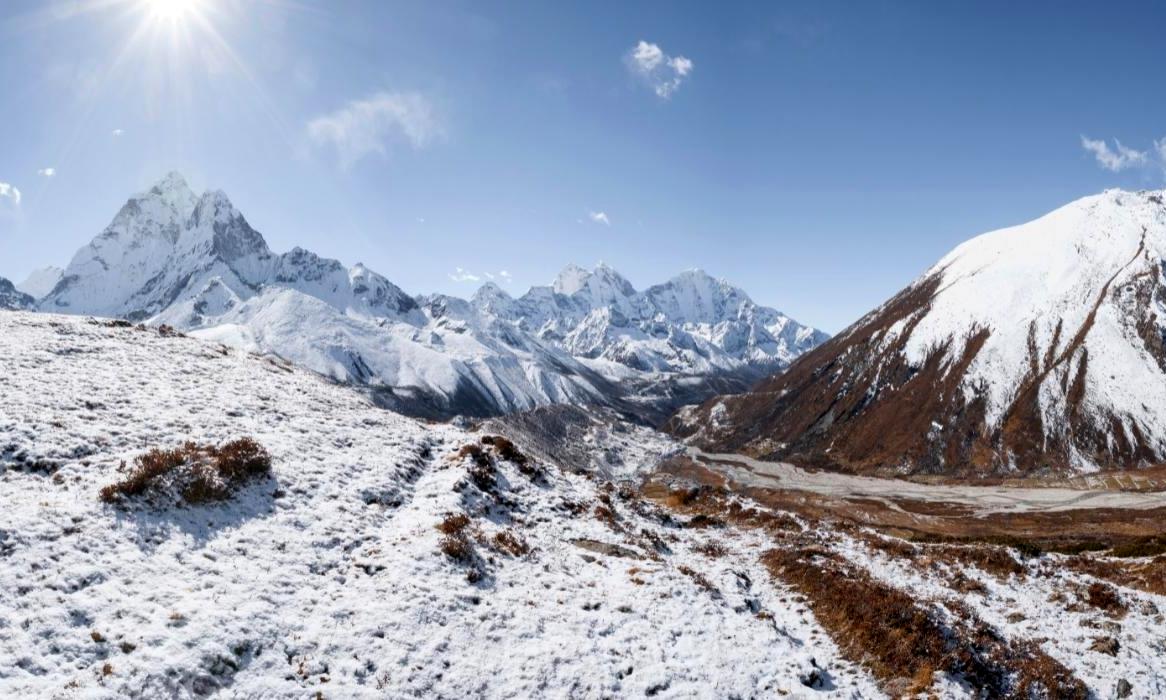
Everest Panorama Trek: An Off-Season Adventure
- Opting for the Everest Panorama Trek during the off-season months allows adventurers to witness the grandeur of the Everest region in a more serene and intimate setting. This period often brings clearer views of the mountains, as the dust and haze of the warmer months have settled, offering spectacular sunrise and sunset views over the iconic peaks, including Everest, Lhotse, Nuptse, and Ama Dablam.
Highlights of the Everest Panorama Trek
- Breathtaking Mountain Views: Enjoy stunning panoramic views of the world’s highest peaks, including Mount Everest, from viewpoints like Namche Bazaar and Tengboche Monastery.
- Vibrant Sherpa Culture: The trek offers a deep dive into the rich culture of the Sherpa people, with visits to monasteries, museums, and traditional villages.
- Tengboche Monastery: A spiritual hub in the Everest region, this monastery is a place of peace and serenity, offering insights into Buddhist practices and rituals.
- Flora and Fauna: The trail passes through the Sagarmatha National Park, a UNESCO World Heritage Site, showcasing a diverse range of flora and fauna, including the chance to spot rare species like the snow leopard and the red panda.
- Lower Altitude Trek: Compared to the full Everest Base Camp Trek, this journey offers a less physically demanding experience, making it accessible to a wider range of fitness levels, especially appealing during the colder off-season months.
Embarking on the Everest Panorama Trek with Luxury Holidays Nepal promises an unforgettable journey into the heart of the Himalayas. This off-season adventure not only brings the majestic beauty of the Everest region closer but also offers a unique insight into the lives of the Sherpa community, all while avoiding the crowds of the peak seasons. Join us for an extraordinary trekking experience that combines natural wonders, cultural richness, and personal achievement in one of the most iconic mountain landscapes in the world.
Why Choose Luxury Holidays Nepal for Your Off-Season Trek?
Offering an unparalleled experience, Luxury Holidays Nepal Pvt. Ltd. specializes in off-season treks. Our expert guides, with their in-depth knowledge of the region and its culture, ensure a safe, enjoyable, and enlightening trek. We take care of all the logistics, from special trekking permits to accommodation, allowing you to immerse yourself fully in the experience.
- Expert Guidance: Our experienced guides are deeply familiar with the off-season treks, ensuring safe passage through its challenging terrain and offering insights into the local culture and history.
- Customized Itineraries: We understand that every adventurer has unique needs and preferences. Our itineraries are flexible, and designed to match your pace and interests.
- Commitment to Sustainability: We are dedicated to responsible tourism practices, ensuring that our treks are environmentally friendly and beneficial to local communities.
- Off-Season Adventure: Trekking in the off-season means fewer crowds, more authentic interactions, and a serene trekking experience that lets you appreciate the natural beauty and tranquility of the Himalayas.
When traveling to Nepal in the off-season with Luxury Holidays Nepal, you'll experience not just breathtaking scenery but also the essence of Himalayan culture. It's an opportunity to tread lightly on sacred grounds, where every step tells a story of faith, resilience, and the enduring beauty of nature.
Off-season trek in Nepal offers an extraordinary opportunity to explore the untouched beauty and serene trails of the Himalayas, far from the bustling crowds of peak seasons. With Luxury Holidays Nepal, adventurers can experience the enchantment of Monsoon Trekking in Nepal, the crisp air of Winter Treks in Nepal, and the unique allure of Rain Shadow Treks Nepal. Whether you are drawn to the mystical valleys of Upper Mustang in the off-season, the cultural richness of Cultural Treks Nepal Winter, or the snowy landscapes of Ghorepani Poon Hill Trek Winter, Nepal's off-season treks promise a journey filled with breathtaking views, rich cultural encounters, and memories that last a lifetime. Embrace the adventure of the off-season, and let Nepal reveal its hidden wonders to you.
FAQs: Off-Season Trek in Nepal
Q: What are the best off-season treks in Nepal?
A: The best off-season treks in Nepal include the Upper Mustang Trek, ideal for monsoon season due to its location in a rain shadow area, the Ghorepani Poon Hill Trek and Everest Panorama Trek for winter, and the Lower Dolpo Trek and Tsum Valley and Manaslu Circuit Trek, which are relatively unaffected by the monsoon rains.
Q: Is trekking in Nepal during the monsoon season recommended?
A: Yes, trekking in Nepal during the monsoon season is recommended for certain areas like Upper Mustang and Dolpo, which lie in the rain shadow of the Himalayas and experience less rainfall. These Rain Shadow Treks Nepal offer clear skies and lush landscapes, making them ideal for Monsoon Trekking in Nepal.
Q: Can I trek in Nepal during winter?
A: Absolutely, Winter Treks in Nepal are possible and offer unique experiences with fewer tourists and clear views of the snow-capped mountains. Destinations like Ghorepani Poon Hill, Everest Panorama Trek, and Lower Altitude Treks Nepal Winter are popular choices.
Q: What should I consider when planning an off-season trek in Nepal?
A: When planning an off-season trek in Nepal, consider the Nepal Trekking Weather Off-Season, choosing the right gear for rain or cold, selecting treks suitable for the season like Rain Shadow Treks Nepal or Lower Altitude Treks Nepal Winter, and understanding the importance of Nepal Trekking Safety Off-Season.
Q: Are there any cultural treks available during Nepal's off-season?
A: Yes, there are several Cultural Treks in Nepal Winter that can be enjoyed during the off-season. These treks, such as the Tsum Valley and Manaslu Circuit Trek, offer insights into the rich cultural heritage and traditions of the local communities against the backdrop of Nepal's stunning landscapes.
Q: What preparations are necessary for off-season trekking in Nepal?
A: Preparations for off-season trekking in Nepal should include waterproof gear for monsoon treks, warm clothing for winter treks, understanding the Nepal Trekking Routes from June to August and Trekking Nepal in December, and ensuring you have a knowledgeable guide, which is crucial for Nepal Trekking Safety Off-Season.
Q: How does Luxury Holidays Nepal support off-season trekkers?
A: We support off-season trekkers by providing expert guides familiar with the Best Off-Season Treks Nepal, offering customized itineraries based on weather conditions and trekker experience, and emphasizing safety and cultural immersion, making them an ideal choice for anyone looking to explore Nepal's trekking routes during the off-season.
If you need any further information, please contact us by email: [email protected], Phone: +977- 985 100 5129 (WhatsApp)
#Tags
Tripadvisor
5.0910 reviewsGoogle
4.8110 reviewsFacebook
4.1 recommend44 ReviewsTrustpilot
4.1 Great(5 reviews)- Trusted by50K plus traveller




